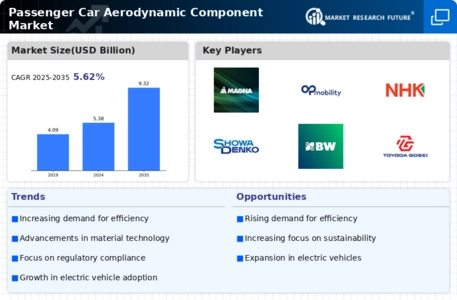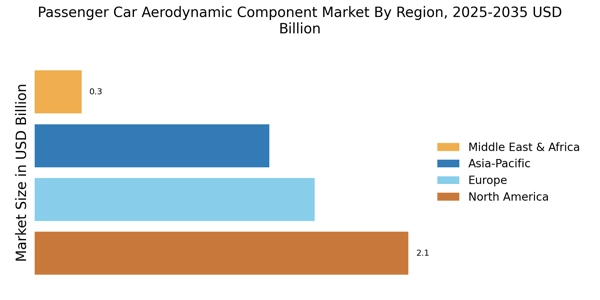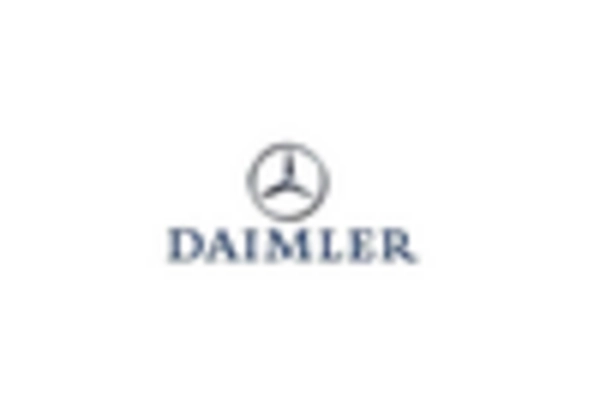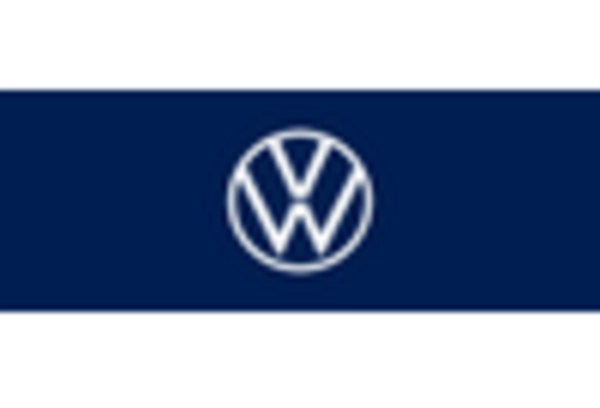Rising Fuel Prices
The Passenger Car Aerodynamic Component Market is significantly impacted by the volatility of fuel prices. As fuel costs continue to rise, consumers are increasingly seeking vehicles that offer better fuel efficiency. Aerodynamic components play a crucial role in reducing drag and improving fuel economy, making them a focal point for manufacturers aiming to attract cost-conscious consumers. According to recent data, vehicles equipped with advanced aerodynamic features can achieve fuel savings of up to 15% compared to traditional designs. This trend is likely to drive demand for aerodynamic components, as manufacturers recognize the need to enhance vehicle efficiency to remain competitive in a market where fuel prices are a critical concern.
Technological Innovations
Technological advancements are a key driver in the Passenger Car Aerodynamic Component Market. Innovations in materials and design methodologies, such as computational fluid dynamics (CFD) and wind tunnel testing, enable manufacturers to create more efficient aerodynamic components. These technologies allow for precise modeling and testing of vehicle aerodynamics, leading to improved performance and reduced drag. The integration of lightweight materials, such as carbon fiber and advanced composites, further enhances the efficiency of aerodynamic components. As these technologies continue to evolve, they are expected to drive the growth of the Passenger Car Aerodynamic Component Market, as manufacturers seek to leverage these innovations to gain a competitive edge.
Competitive Market Dynamics
The competitive landscape of the Passenger Car Aerodynamic Component Market is characterized by rapid innovation and strategic partnerships. As manufacturers strive to differentiate their products, there is a notable increase in collaborations between automotive companies and technology firms. These partnerships aim to develop cutting-edge aerodynamic solutions that enhance vehicle performance. Additionally, the entry of new players into the market is intensifying competition, leading to a broader range of aerodynamic components available to consumers. This dynamic environment encourages continuous improvement and innovation, which is likely to propel the growth of the Passenger Car Aerodynamic Component Market as companies seek to capture market share and meet evolving consumer demands.
Consumer Awareness and Preferences
Consumer awareness regarding environmental issues and fuel efficiency is shaping the Passenger Car Aerodynamic Component Market. As consumers become more informed about the impact of their vehicle choices on the environment, there is a growing preference for cars that incorporate aerodynamic features. This shift in consumer behavior is prompting manufacturers to prioritize the development of vehicles that not only meet aesthetic preferences but also offer enhanced efficiency. Surveys indicate that a significant percentage of consumers are willing to pay a premium for vehicles that demonstrate superior fuel economy, which in turn drives demand for aerodynamic components. This trend suggests that the Passenger Car Aerodynamic Component Market will continue to expand as manufacturers align their offerings with consumer expectations.
Regulatory Compliance and Standards
The Passenger Car Aerodynamic Component Market is increasingly influenced by stringent regulatory frameworks aimed at reducing emissions and enhancing fuel efficiency. Governments worldwide are implementing regulations that mandate lower CO2 emissions from vehicles, which necessitates the integration of advanced aerodynamic components. For instance, regulations such as the Corporate Average Fuel Economy (CAFE) standards in the United States and the European Union's CO2 emission targets compel manufacturers to adopt aerodynamic designs. This regulatory pressure drives innovation in the Passenger Car Aerodynamic Component Market, as companies strive to meet compliance while maintaining performance. The market is projected to grow as manufacturers invest in research and development to create components that not only comply with regulations but also enhance vehicle performance and consumer appeal.


















Leave a Comment